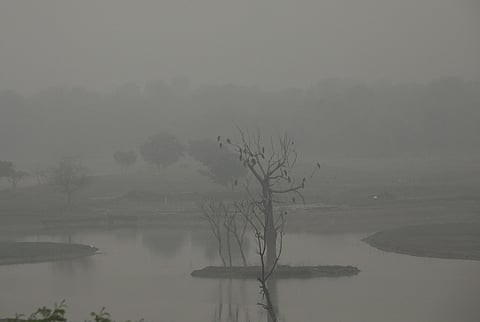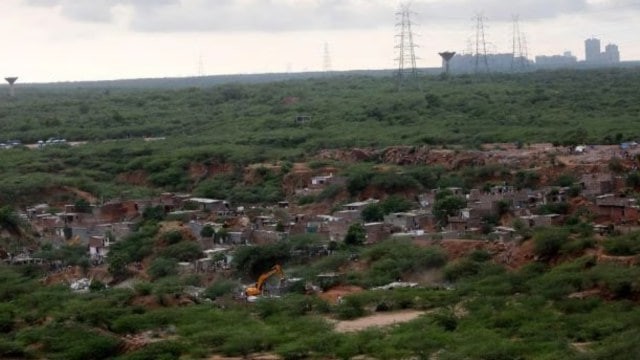Description

Disclaimer: Copyright infringement not intended.
Context
- Agharkar Research Institute has made a groundbreaking discovery by isolating and describing India’s first cultures of indigenous methanotrophs.
Details
- These methanotrophs were primarily sourced from rice fields and wetlands in Western India.
- The team identified a novel genus and species, Methylocucumis oryzae, notable for its oval, cucumber-like shape, hence the nickname ‘methane-eating cucumbers.’
Background
Methanogens
- Methanogens are microorganisms whose metabolism generates methane.
- All methanogenic organisms belong to the Domain Archaea, phylum Euryarchaeota.
- Methanogenic archaea, also referred to as methanobacteria, are the living beings most sensitive to oxygen which is why they only develop in anaerobic and reducing environments.
- Despite this limitation, their ecological niches are widely distributed: aquatic sediments (marshes, swamps), stagnant soil (peat bogs, ricefields), marine geothermal vents, the digestive tract of certain animals
Methanotrophs
- Methanotrophs are organisms which are able to obtain energy by oxidizing methane (CH4).
- Methane, found widely in nature, is produced in strict anaerobic conditions by methanogenic Archaea.
- It is the main gas in anoxic muds, marshes, lakes, rice paddies, and landfills.
- Methane is the major constituent of natural gas and is also present in many coal formations. It can be used as an electron donor by methanotrophic bacteria.
- Methanotrophs can also use other one-carbon compounds as a source of energy and carbon.
- Most of the known methanotrophs are aerobic, although, recently, methanotrophic activities in anoxic environments have been detected.
- All methanotrophs possess a specific enzyme, methane monooxygenase, which can insert an oxygen atom into the methane molecule generating methanol.
- The oxygen requirement for the oxygenation of methane explains their obligate aerobic character.
Recent Discovery: Importance of Methanotrophs
- The world is grappling with global warming and climate change, with methane emerging as a significant concern.
- Methane, the second most crucial greenhouse gas, has a global warming potential 26 times greater than carbon dioxide.
- Sources of methane include wetlands, ruminants, rice fields, and landfills, where methanogens produce this gas.
- In response, methanotrophs, or methane-oxidizing bacteria, play a crucial role in mitigating methane by oxidizing it, converting it into carbon dioxide and water.
Unique Characteristics and Applications
Methylocucumis oryzae has several unique traits:
- Morphology and Size: This methanotroph is larger than most bacteria, comparable in size to a small yeast (3-6 µm).
- Temperature Sensitivity: It is strictly mesophilic, thriving only up to 37ºC, unlike other methanotrophs that can tolerate higher temperatures.
- Colony Appearance: It forms light pale pink colonies and has a genome indicative of a carotenoid pathway.
Environmental and Agricultural Impact
- Recent studies revealed that Methylocucumis oryzae is a significant component of the methane cycle in a stone quarry in Pune.
- Additionally, it was found to promote rice plant growth by inducing early flowering and increasing grain yield.
- Pot experiments using the Indrayani rice variety demonstrated the methanotroph’s beneficial effects.
Challenges and Future Directions
- Despite its potential, the slow growth rate of Methylocucumis oryzae limits large-scale cultivation, which is necessary for broader applications. However, its abundance in wetlands and rice fields suggests it is performing its methane-mitigating role effectively.
- Further research and improvements in culture conditions could enhance its applications in mitigating climate change.
MUST READ ARTICLE: RISING METHANE AND EARTH’S CLIMATE TRANSITION: https://www.iasgyan.in/daily-current-affairs/rising-methane-and-earths-climate-transition
MUST READ ARTICLE: Methane Green House Gas: https://www.iasgyan.in/daily-current-affairs/methane-green-house-gas#:~:text=The%20microbes%20that%20produce%20methane,sediments%20of%20lakes%20and%20oceans.
|
PRACTICE QUESTION
Q. Discuss the impact of rising methane levels on Earth's climate transition. Include the sources of methane, its role as a greenhouse gas, and potential mitigation strategies.
|
SOURCE: PIB












